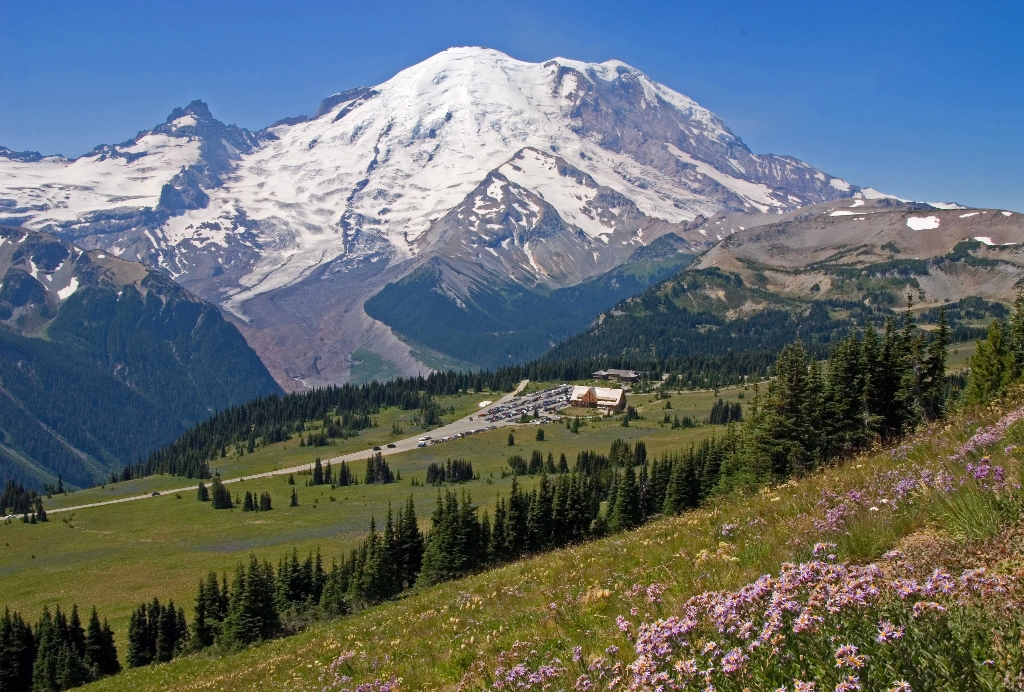
Season: Summer Only (July - September)
Sunrise is open during the summer only, typically from early July to late September (sometimes mid-October depending on weather). Wildflower peak bloom is typically late July or early August. Sunrise is an extremely popular destination. NOTE: From July 4 - September 2, 2024, timed entry reservations are required to enter the Sunrise Corridor between 7:00 am and 3:00 pm.
At 6,400 feet, Sunrise is the highest point one can drive to on the mountain with the summit 8,000 feet higher. Sitting in colorful subalpine meadows that turn bright reds and oranges in fall, Sunrise offers spectacular views of the mountain and glaciers. The area offers a visitor center with exhibits and a bookstore, ranger-led activities, a day lodge with a gift shop and restaurant, restrooms, and miles of trails. Arrive mid-week or early or late in the day to avoid the crowds.
Sunrise is perched on top of the earliest lava flow from modern Mount Rainier. Numerous layers of ash sit upon this ancient flow and catalog a variety of more recent geologic events. Popcorn sized pieces of ash from an eruption that occurred 2,200 years ago litter the meadows surrounding the visitor center.
One can clearly see the scar of a massive collapse of the northeastern side of the mountain that occurred 5,600 years ago. The Emmons Glacier covers part of what remains of this wound like a giant bandage. The long ridges that radiate out from the volcano were formed by their interaction with much larger ice-age glaciers. Fire on the mountain has always had to contend with ice. Rock from a 1963 rockslide off Little Tahoma insulates Emmons Glacier and slows the melting of the largest glacier in the contiguous United States.
A thin soil layer has developed from volcanic deposits. This volcanic soil drains quickly, erodes easily, and retains little moisture. The mountain intercepts moisture-laden ocean air flowing inland. This air cools as it rises over the mountain, dropping most of its moisture as rain or snow on the western slope. These factors have led to the development of subalpine meadows interspersed with clumps of trees. The annual wildflower display here is very beautiful, but the drier conditions prevent the growth of the lush flower displays that one can see at Paradise. On the other hand, the dry side generally offers clearer views of the mountain. The beauty and tranquility of the meadow’s disguises the constant effort of plants struggling to survive in this subalpine ecosystem’s short growing season. Please stay on trails. Plants in this environment are easily damaged.
The area’s buildings evoke a sense of the past with their log sidings, stone foundations, and cedar shakes. These buildings in the Sunrise National Historic Landmark District were intended to blend harmoniously with their environment.
For thousands of years before development of the area, Native American people recognized the meadows as a productive place to hunt and gather a variety of animal and plant resources. Aside from hunting and gathering, it is reasonable to believe that these early visitors enjoyed and gained a sense of spiritual renewal from the mountain. These values continue to be important to Native American people to the present day.
Is there something we missed for this itinerary?
Itineraries across USA


















































